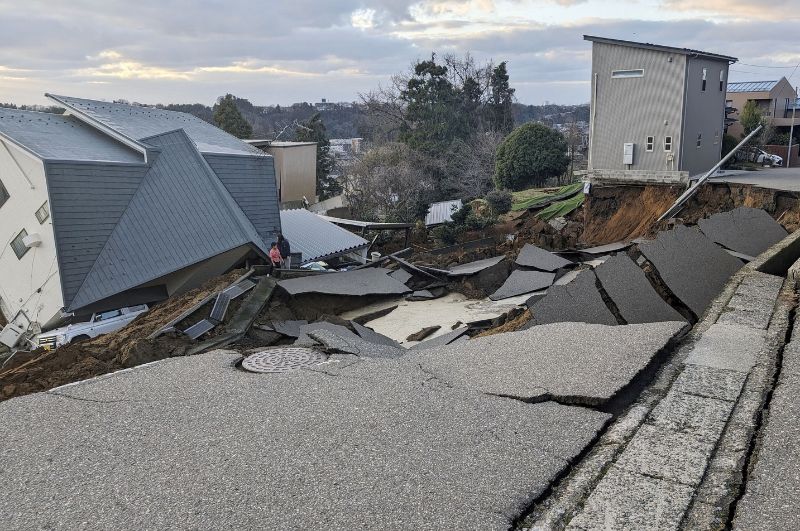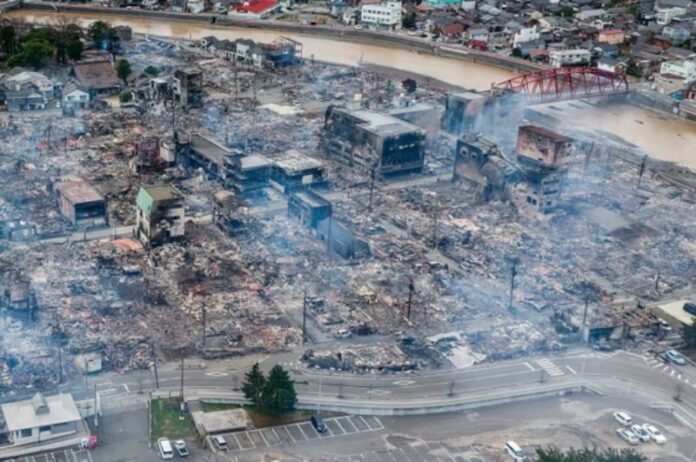Japan has experienced an unprecedented series of earthquakes, with a staggering 155 tremors recorded since Monday. The most severe, a 7.6-magnitude earthquake, struck Ishikawa along with another significant earthquake over magnitude 6. The Japan Meteorological Office reported that most earthquakes were above magnitude 3. Despite a gradual decrease in intensity, six strong jolts were still felt on Tuesday.
Widespread Damage and Casualties
Japanese Prime Minister Fumio Kishida confirmed extensive damage and numerous casualties from the New Year’s Day earthquake in central Japan. He emphasized the urgency of rescue operations. The earthquake led to building collapses, fires, and 48 fatalities, with more damage still being assessed.

Tsunami Aftermath and Wajima Fire
Japan has withdrawn all tsunami warnings, but the effects remain severe. Tsunami waves reaching over a meter high caused significant damage. In Wajima, a major fire broke out, engulfing several houses, while in Suzu, aerial footage showed sunken boats and widespread destruction.
Emergency Responses and Evacuations
Over 32,700 homes lost power, prompting the Japanese fire and disaster management agency to order mass evacuations. Around 1,000 people took refuge at a military base. The Wajima Fire Department, inundated with rescue requests, is struggling to manage the crisis.
Infrastructure and Travel Disruptions
Numerous infrastructures, including major highways, bullet train services, flights, and mobile phone coverage, have been disrupted. The Japan Meteorological Agency warned of potential further quakes.
International Support and Local Preparedness
US President Joe Biden has offered assistance to Japan in coping with the aftermath. Despite the high frequency of earthquakes in Japan, the nation’s strict building regulations and routine emergency drills have historically minimized damage and casualties.



